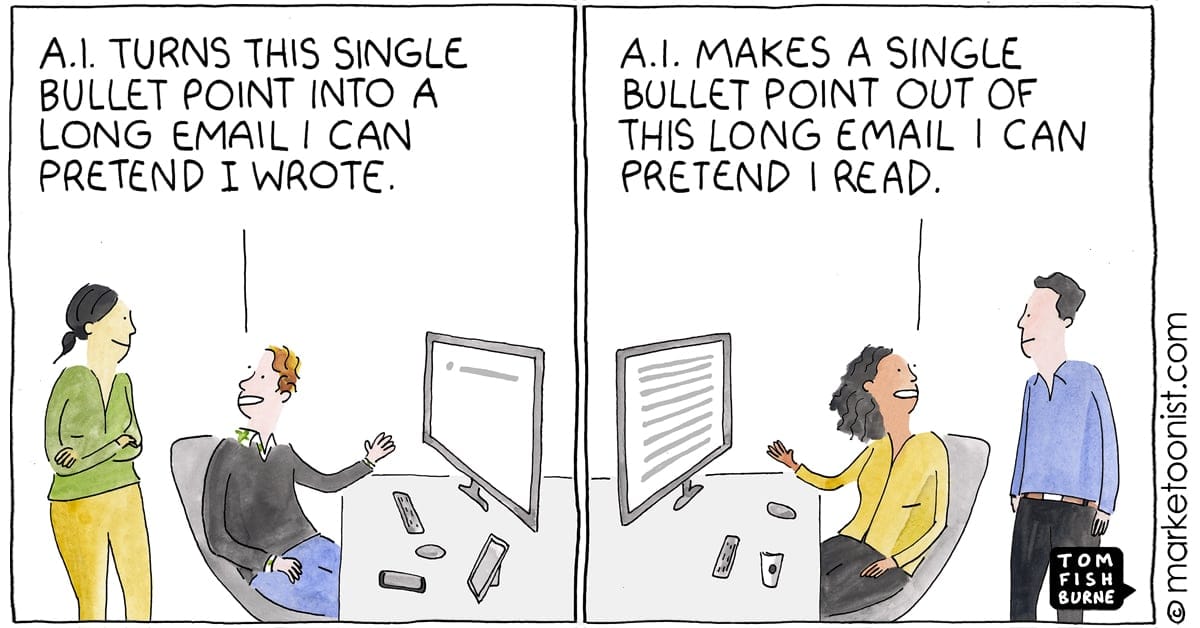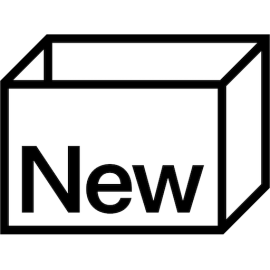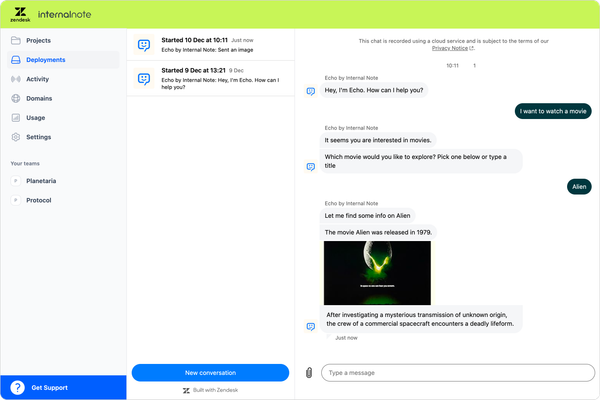
Zendesk News Roundup for August 2025
Zendesk’s summer updates bring sweeping changes: a revamped Resolution platform, deep AI integrations, and major product rebrands. I reorganized my blog into 10 new categories and reflected on my content—strong in automation, but lacking coverage of analytics, QA, and workforce management.
Summer's supposed to be a more quiet season. Plenty of people are on holiday, companies don't really want to make major changes, and it's a time to wrap up, clean up and start planning for the last quarter of the year.
The same goes for my blog. Zendesk has shifted their platform from Zendesk Suite with AI towards their full resolution platform, plenty of features got released, while existing elements got rebranded or became obsolete.
So over the last few weeks I've quietly reorganized the website a bit, reorganizing all articles into 10 new categories mapping the span of Zendesk's platform. I hope this makes the content easier to discover for new readers.

It seems I'm not the only one taking the time to create clarity. Zendesk released a lot of platform updates in the last months and year(s). Avid readers of this blog might have noticed the same, and so seemingly has Zendesk's marketing team.
New on their Newsroom is a great overview of their Resolution platform, listing all the biggest features they released so far this year. It's an impressive list of new capabilities, showing how they deeply integrated AI into the platform and redefined how Zendesk as a platform can work for you.
Without tooting my own horn too much, I decided to create a small scorecard for myself so see how many of those listed features I wrote about on my blog.
- AI and Automation Breakthroughs - 8/8
- Enhanced Support Operations - 6/8 with two articles in draft
- Analytics and Knowledge Enhancements 5/10, with the remaining five topics in EAP
- Workforce Engagement Management - 0/5
Looking at these numbers there's one thing that jumped out. It's clear my own interest and the content of this blog is very much focussed on the automation and assist elements of Zendesk, and that insights are a very clear weak spot of my content. I almost never touch or write about Analytics, QA or WFM.
For why this is the case, well, it's mainly because insights require data.
It's "easy" to create example flows for AI Agents and Agent Copilot. They already work with a single customer inquiry and can show the immediate impact. Explaining how that one interaction example then scales towards an entire backlog is a matter of show, tell and make-belief.
But to actually show the impact of Analytics, QA or WFM, you need a lot of data. A report with one ticket is not a report. So for me, writing about these items without actually showing the working solution is a though ask.
But as customer experience starts with the customer and ends with your company, I think this is an area I should really put the effort in for Q4.
Before we dive in, a quick ask.
Writing Internal Note takes a lot of time outside my regular 9 to 5 — researching updates, testing features, and turning it all into something actually useful for Zendesk admins.
If you find value in these weekly deep dives, consider upgrading to a paid subscription. You’ll get an invoice or receipt, so if you’re reading this for work, there’s a good chance you can expense it.
It helps cover the cost of the tools (and coffees) that keep this project going. Thanks for the support!
Zendesk
Zendesk acquires HyperArc
Zendesk has officially acquired HyperArc, bringing in a powerful, AI-native analytics platform that, according to the press release, transforms traditional BI into intelligent, assistant-driven exploration.
Instead of relying solely on static dashboards, HyperArc was built to deliver personal analytics agents for each user. It offers an AI Assistant that allows for data exploration by querying and tagging the report data.
By integrating HyperArc’s AI-native technology, Zendesk aims to create a unified analytics platform that builds on the foundation established by Explore while introducing next-generation, GenAI-powered insights - Zendesk Newsroom
It's a shame Hyperarc.com already redirects to Zendesk, would've loved to learn more about what this does 😅. But I managed to find one demo video on YouTube.
This acquisition seems takes Explore’s Quick Reports one step further. Quick Reports already lets users generate prompt-based reports in seconds using natural language, removing the need to manually define metrics or attributes . With HyperArc, they're embedding an actual AI Agent for reporting into Explore. One that doesn't just respond to prompts, but seemingly proactively learns, understands, and reasons across your entire Zendesk dataset memory—making insights more intuitive, contextual, and far-reaching.
A question I already have is: how does this relate to QA. They both provide insights on your data; although one focusses on conversations and the other on knowledge, efficiency, and other operational metrics.
Second question: If I hear BI, I also hear combining data across teams. Zendesk Explore used to be called BIME and offered reports across tools. When Zendesk bought it they removed all external data options. I wonder if HyperArc will be 100% Zendesk data focussed, or will allow for cross-department data sets?
Features
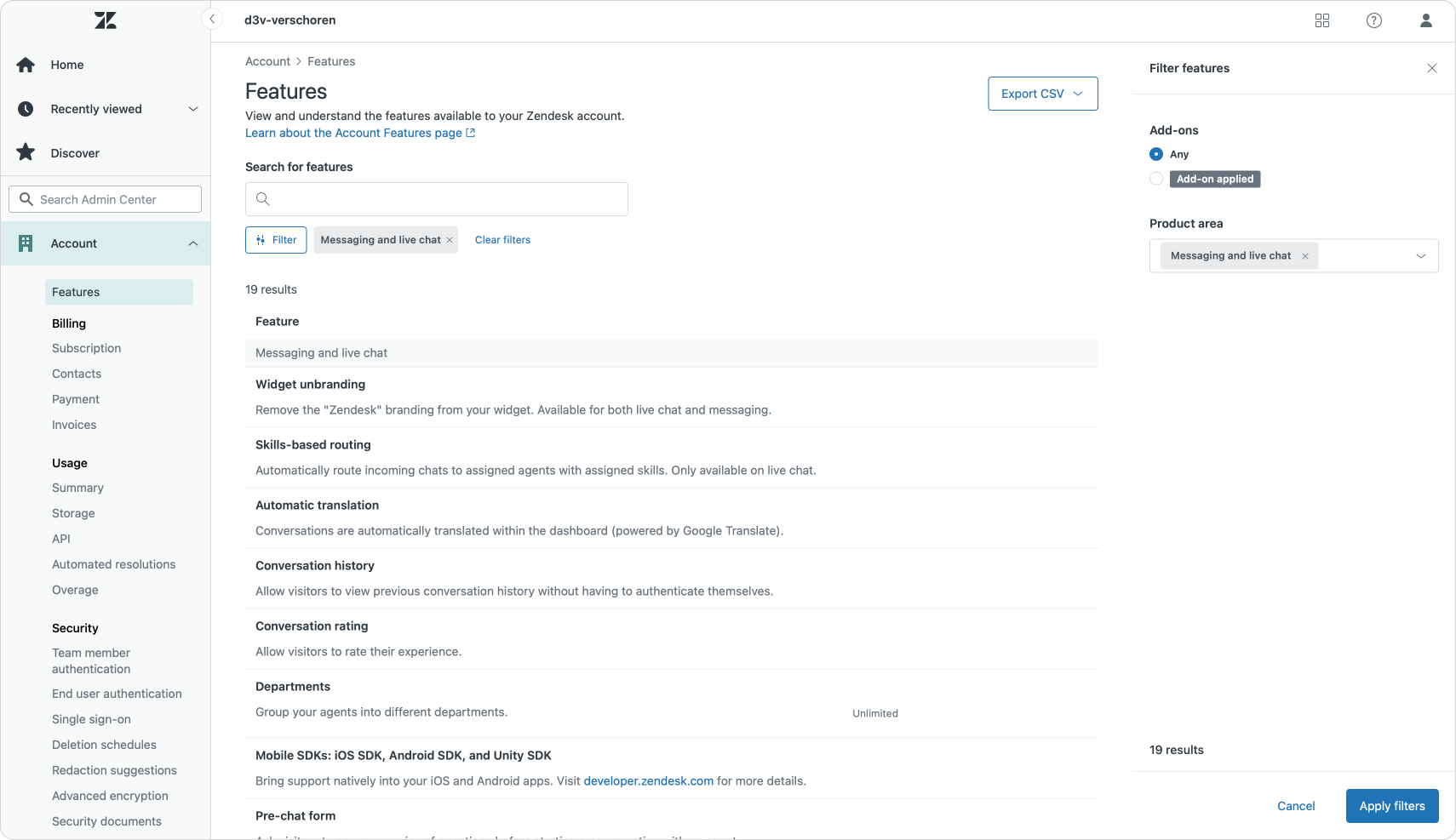
The Features page in Admin Center shows a summary of all the main features in your Zendesk account. Use this page to accelerate adoption of Zendesk features and get the maximum benefit from your account.
I like the idea of having a single place where all your available Zendesk features are listed. But just a list is not the most useful I think? There's no links to documentation, no deep links into the Admin Center on where to enable it, and most import, there's no way to filter on "You're not using this".
If the goal of this page is to enable more customers, you'd expect it to be a bit more.. actionable?
AI Agents & Messaging
User Segments
Segments are collections of customers who share common traits. By creating segments, you can precisely tailor experiences for distinct subsets of your user base, enabling personalized communication and targeted automation.
The Zendesk Help Center has known user segments since forever, and the AI Agent Essential inherits those if you enable SSO on the Web Widget.
For AI Agents Advanced no such capability was there, meaning we had to resort to complex search filters, or other ways to gate access.
The new segments allow you to combine logged in user data, API data and search rules to gate access to knowledge and use cases within AI Agents Advanced.
Keep an eye out for a future article on this!

Messaging goals
Zendesk Sell was a rare misstep for Zendesk focusing on Sales instead of Customer Support. Similarly they had Zendesk Connect, an attempt to add Marketing and Campaign tools to the platform. It was sunset in 2021 and the outbound element got replaced with native Proactive Messaging.
New this month is Goals for Messaging, a way to measure and attribute specific customer interactions to Agent actions.
Goals for messaging allow you to define specific actions that signal a successful customer interaction and assign credit for those interactions to the appropriate agents. This enhancement is designed to improve how you measure success in customer engagement.
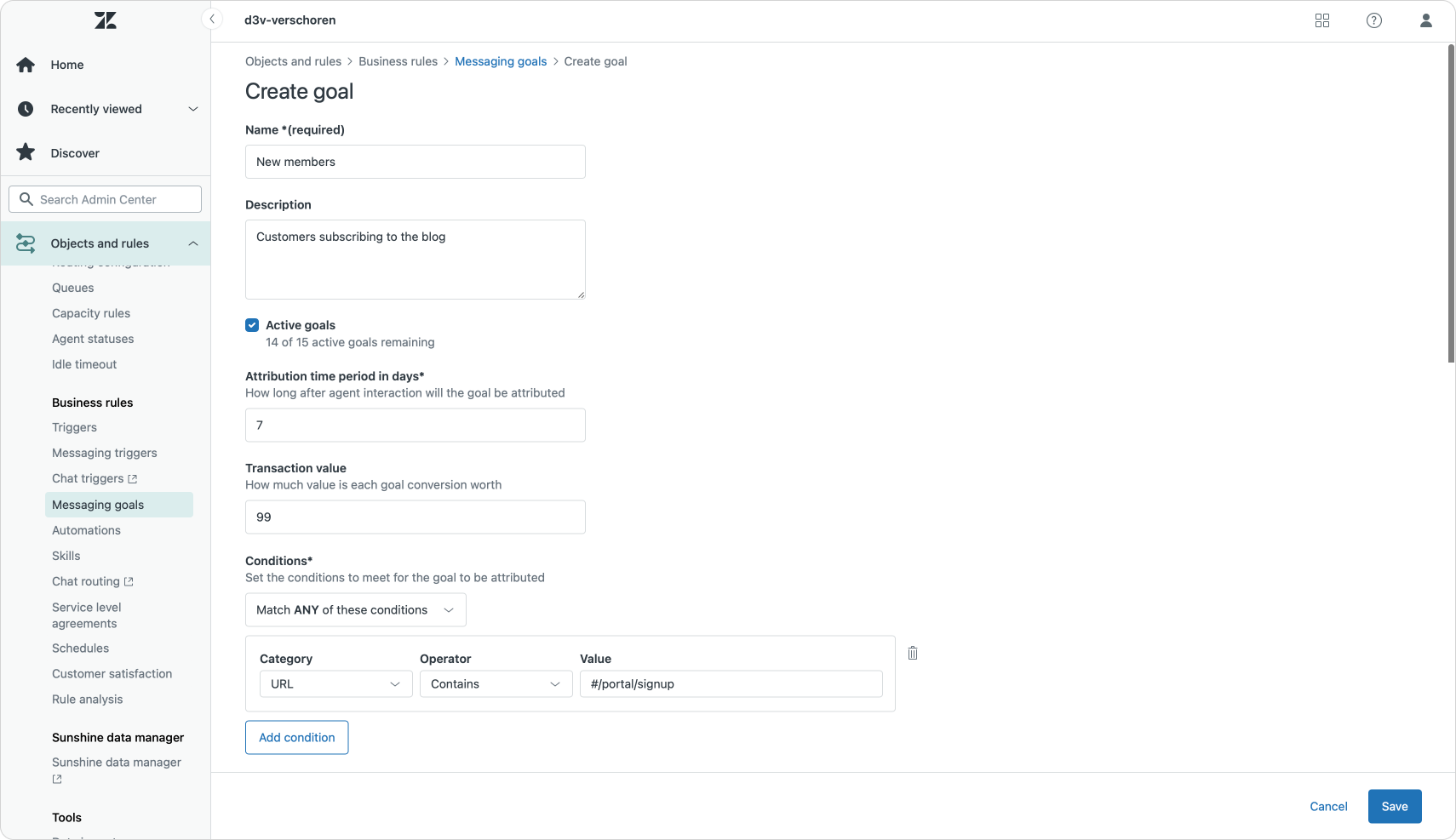
Agent Workspace & Routing
Organization cards
The context panel next to tickets gives agents a lot of insight into who the customer is. The User Profile card shows them details about the user, and similarly the Custom Objects cards give insights in related elements like assets, products or support contracts.
New this month is the ability to also view Organization details in the context panel. You can reach this detail card by clicking on the Organization name in the User Profile card.
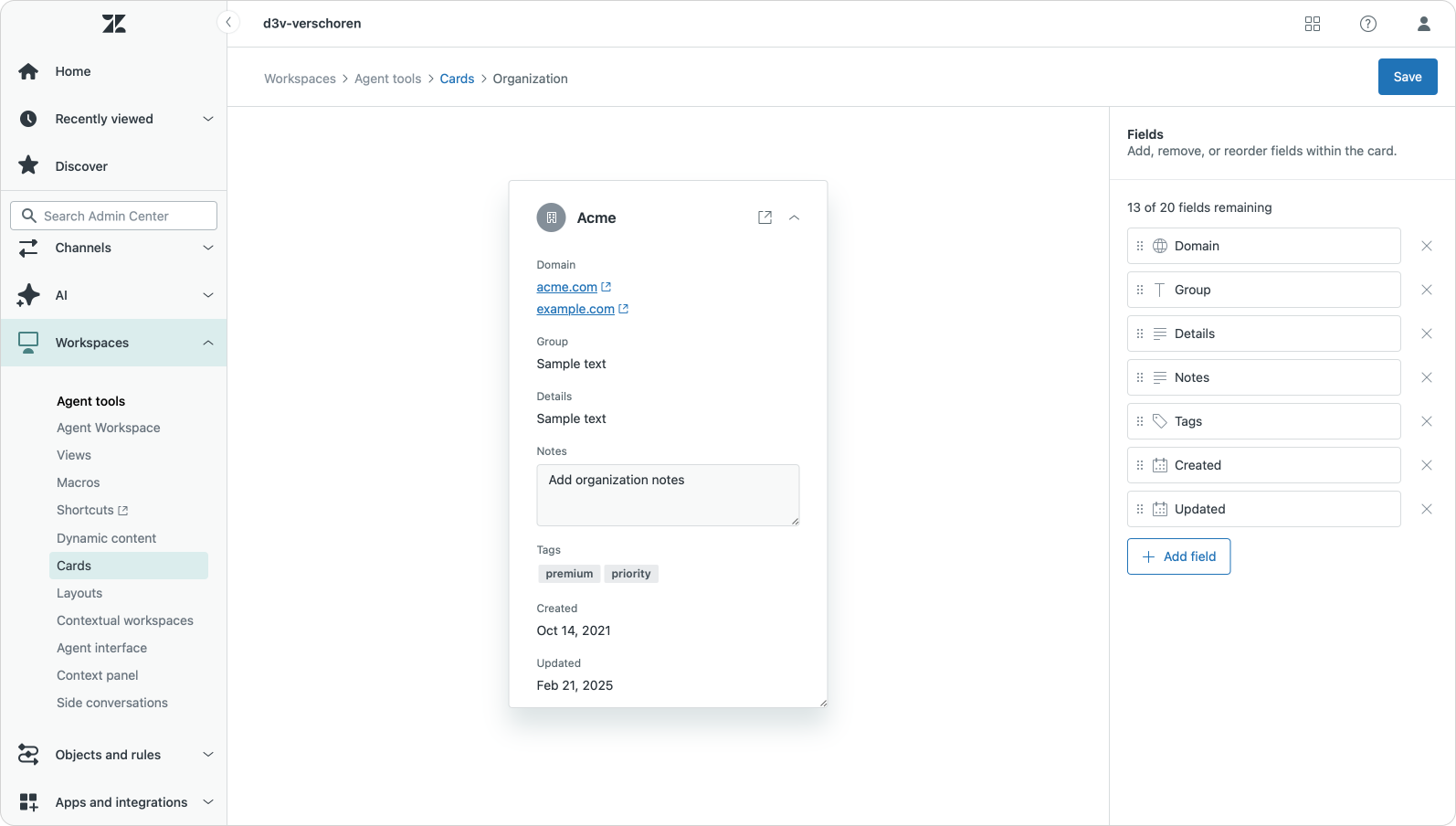
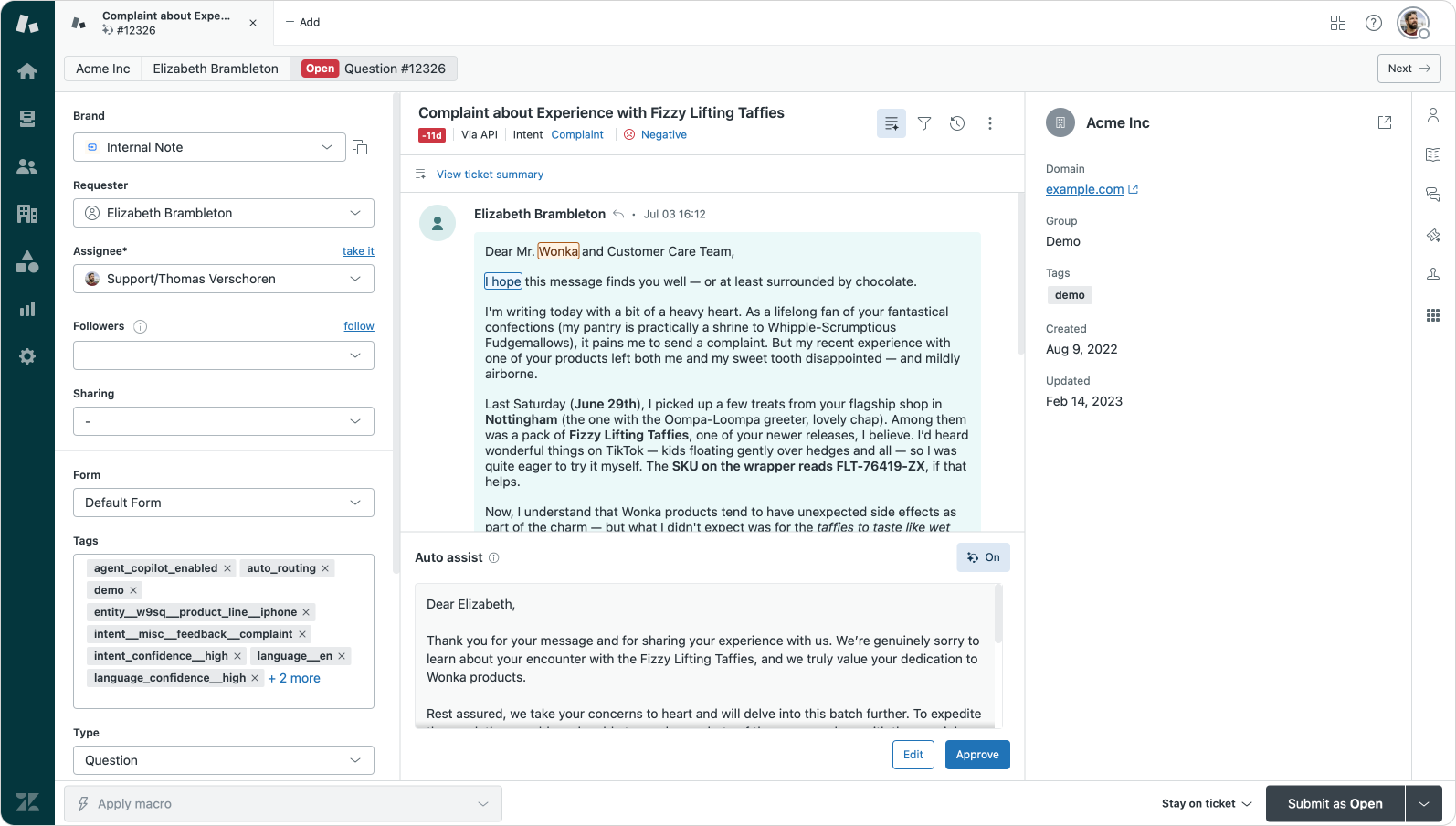
And similar to users and custom objects you can dive Admin Center to reorganize the ticket fields shown in that card.
Side Conversations for Zendesk Mobile
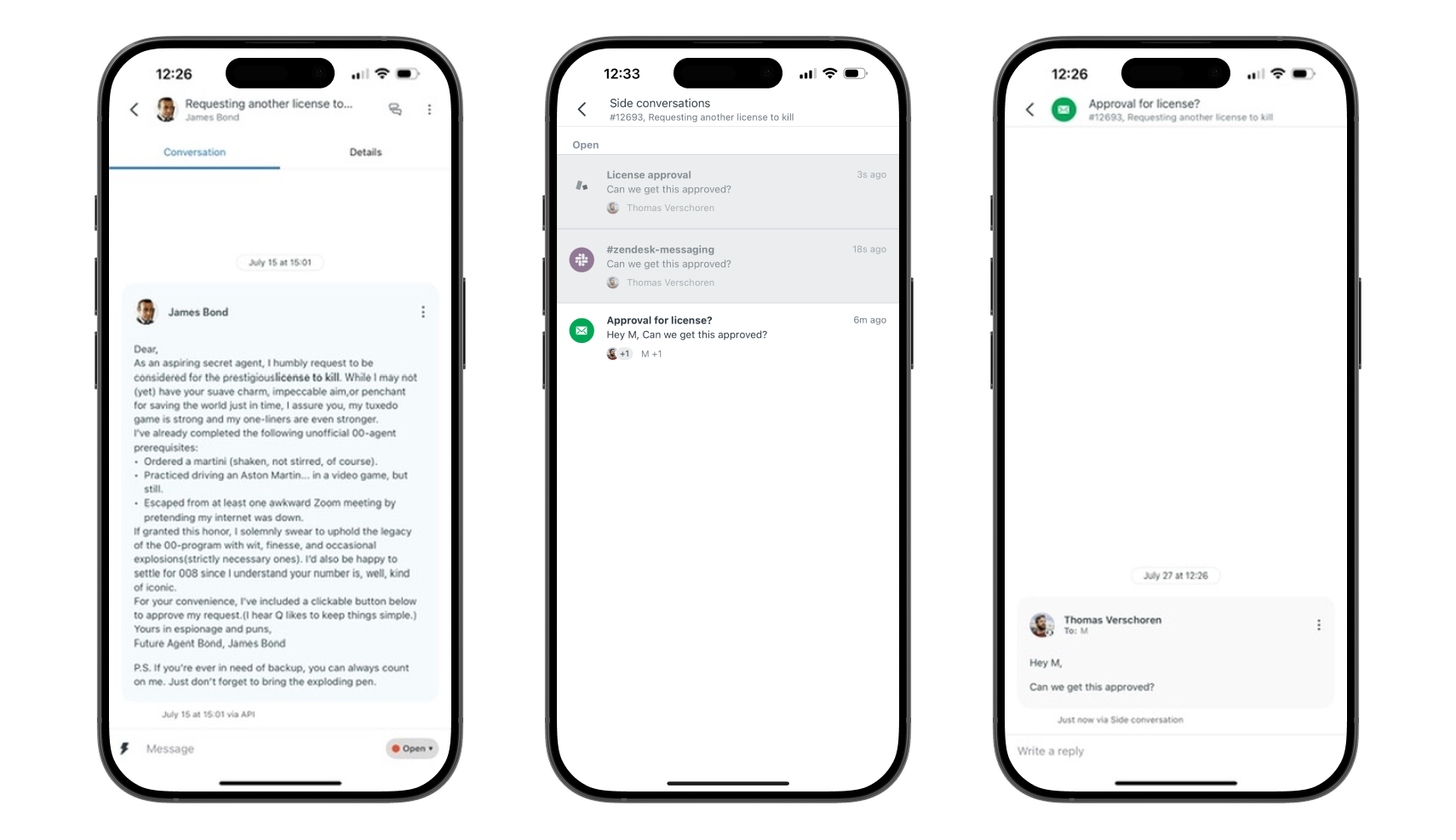
It's now possible to view and reply to side conversations from the Zendesk app for iOS and Android. Sadly, you can't create side conversations (yet?) from the app, and only side conversations via email are accessible for now.
Release capacity and end sessions
Within Messaging you have the ability to automatically remind customers of pending conversations. This helps you to keep tickets flowing and has the ability to reduce backlog by automatically solving tickets that don't get customer replies.
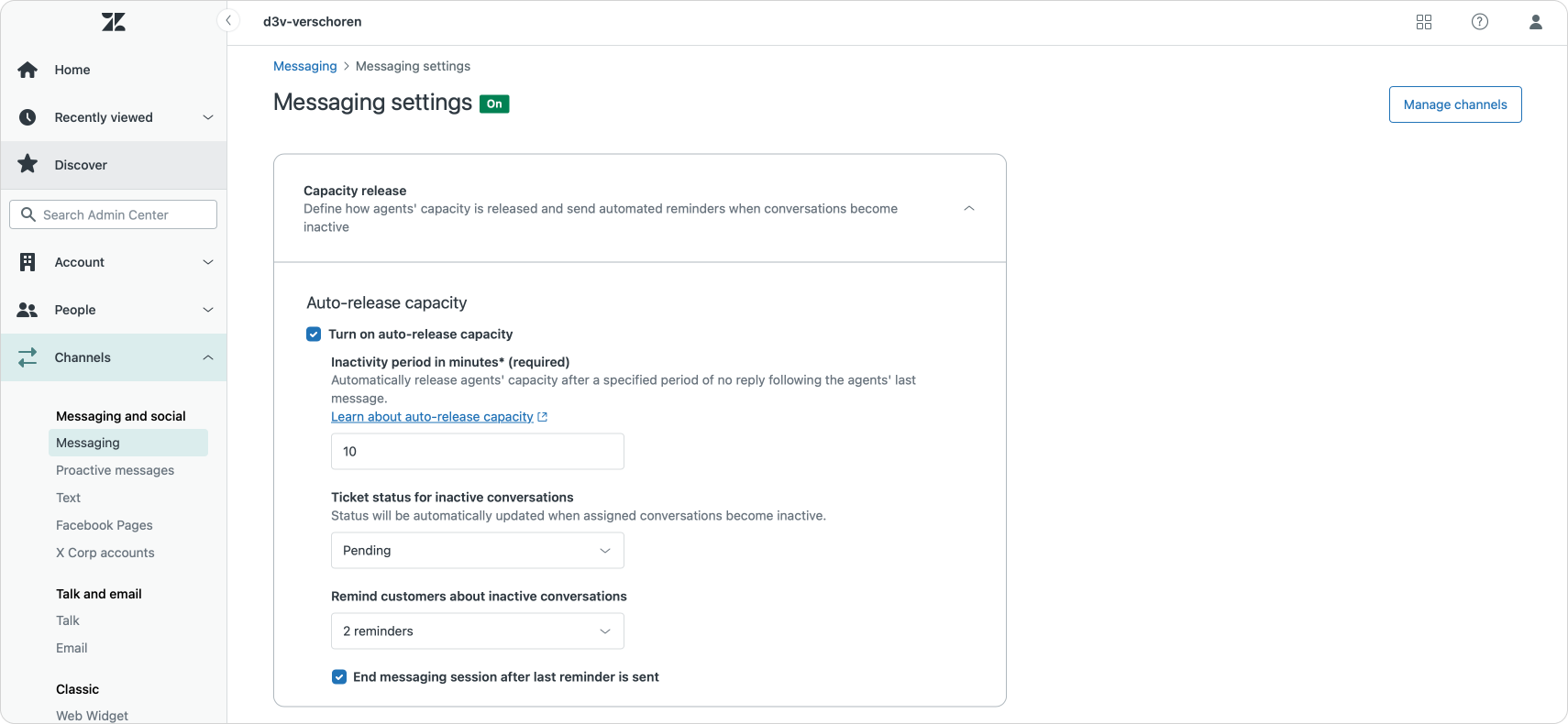
After your last reminder gets send, the auto-release option automatically solves the ticket and removes it from agents' queues. When a customer replies after this happens the ticket reopens and gets reassigned to an agent.
To prevent this from happening and routing the conversation back to your AI Agent, you can now choose to end the session after the last reminder is send. This way unresponsive customers get routed past your AI Agent first, giving it the chance to resolve the (new?) issue without involving your human agents.
Agent Copilot
Standard Actions for Procedures
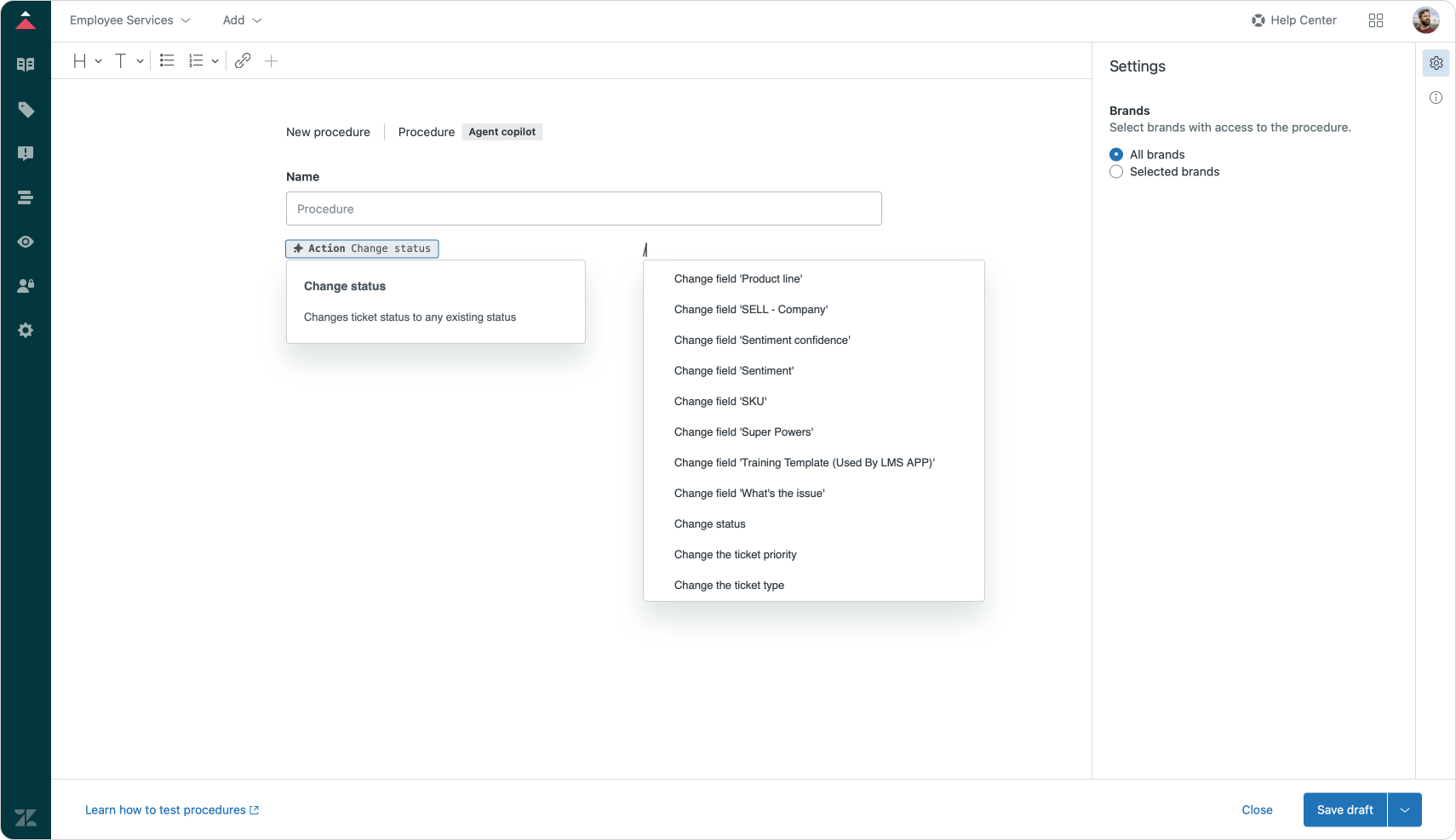
Procedures in Agent Copilot can be made more powerful by linking them to actions. These allow you to make changes to both Zendesk itself and external platforms.
To make the changes you make to your tickets more consistent Zendesk added a set of standard actions to modify status, assignee, groups as well as system and custom ticket fields.
Communication Guidelines for Auto-assist
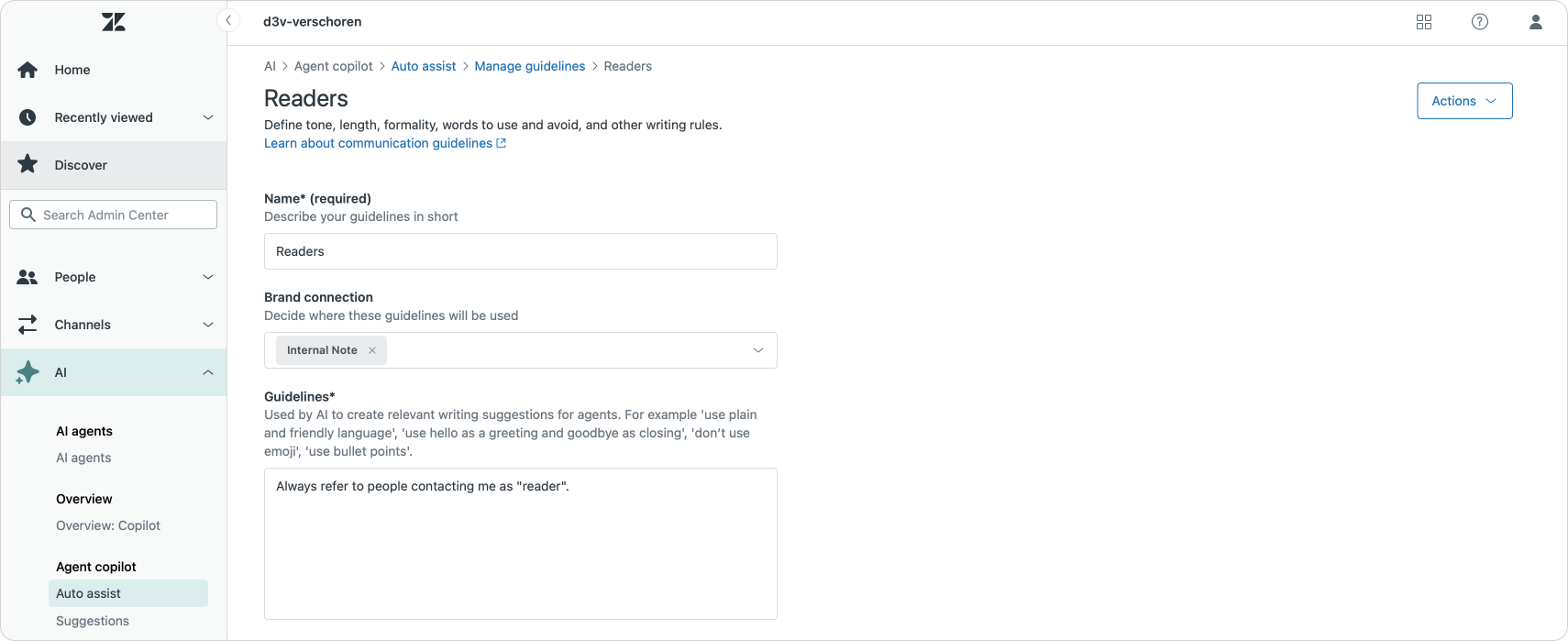
Similar to the Instructions for AI Agents Advanced, these new guidelines allow you to tweak the behavior of both auto-assist and suggested replies.

Synonym support for Entity Detection
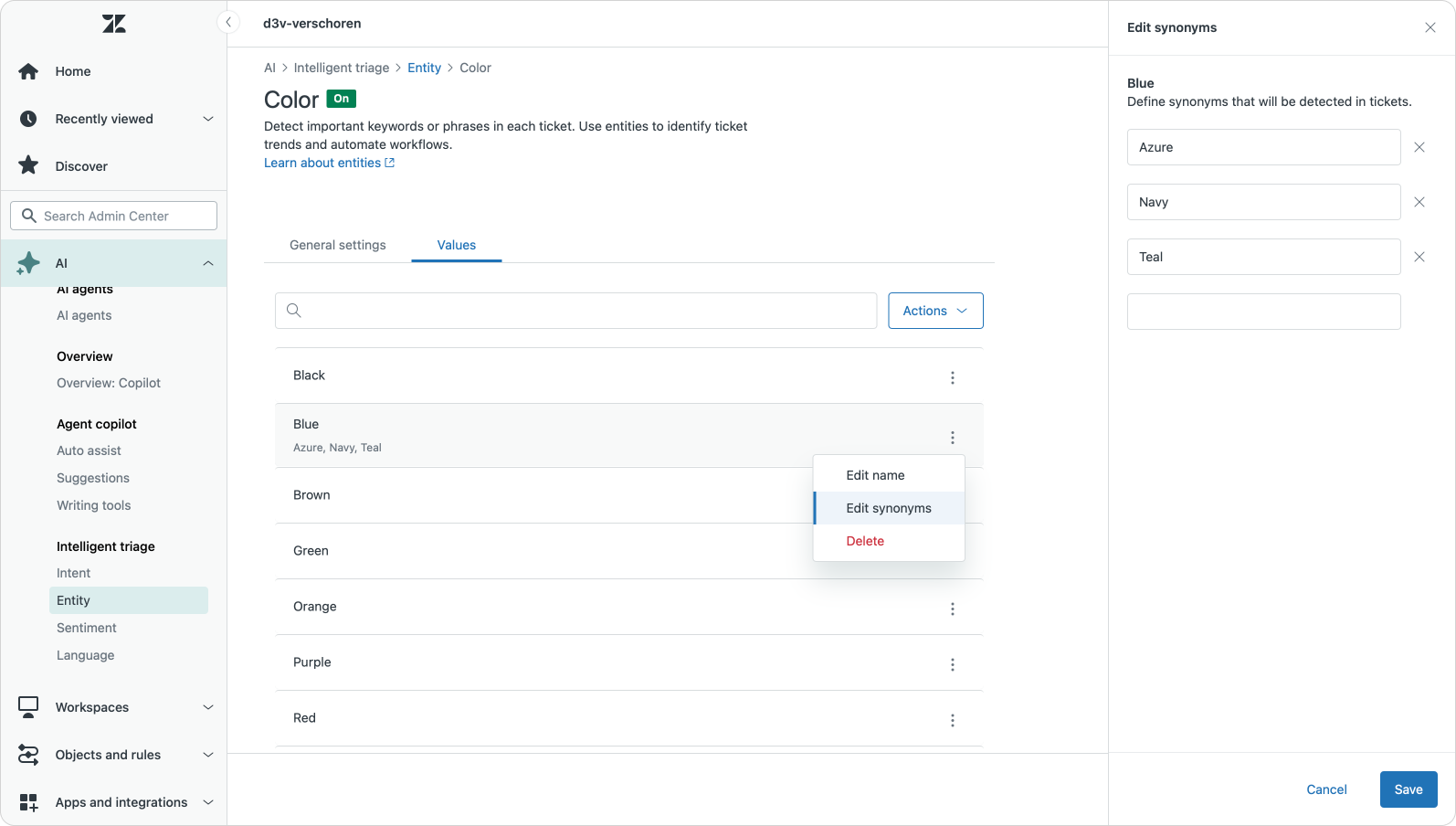
Previously, entity detection only supported the detection of entity values. With this release, admins can now define synonyms for each entity value.
This simplifies setup and enhances the accuracy of entity detection, which gives admins greater confidence to build reliable, entity-based workflows.
Earlier this year the Entity detection in Intelligent Triage gained support for spelling mistakes. And now we get support for synonyms. The combination of these will make it even better at matching what customers write with your chosen entities. I can image Apple using it to combine iTouch, iPod touch, and iPhone touch into one object. Or similar Zendesk using it to map Guide, Knowledge and Help Center into the same product value.
Knowledge & Insights
AI Translations for Articles
Zendesk has made some major changes to their Help Center in the last few months. The new editor makes managing images and html within the article easier. The AI writing tools offer expand, simplify and tone-shift capabilities to your editors.
And the newly releases AI translations for articles allow you to translate your articles to multiple languages with the click of a button.
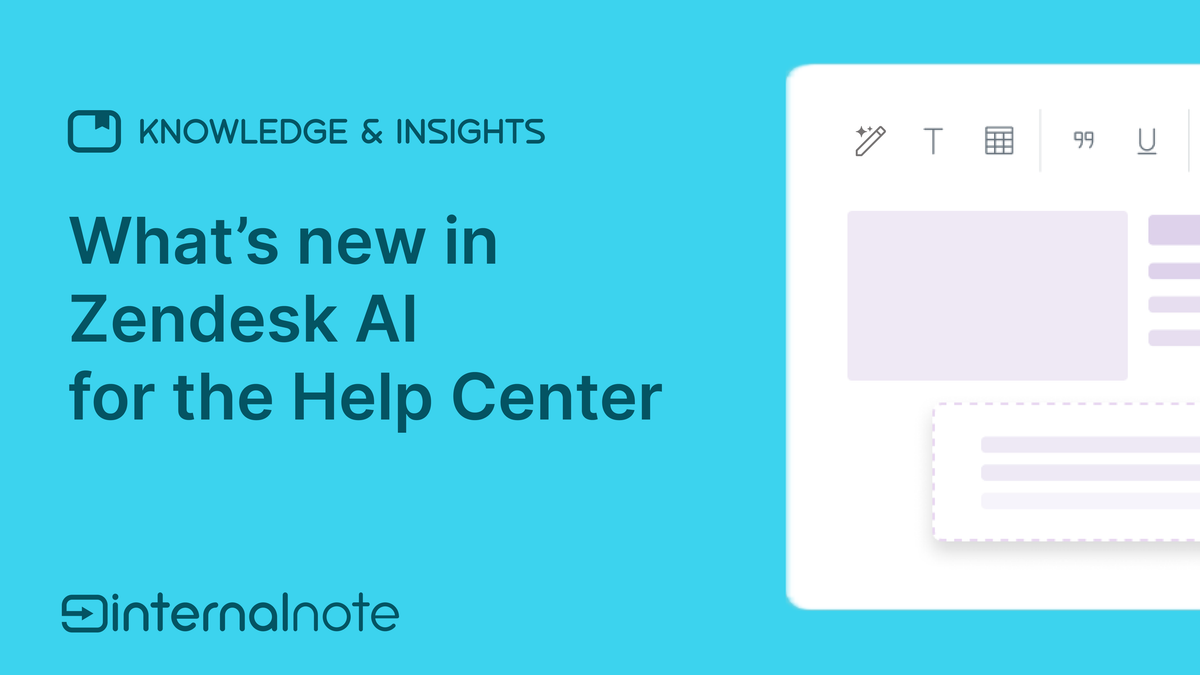
Article Multiplacement
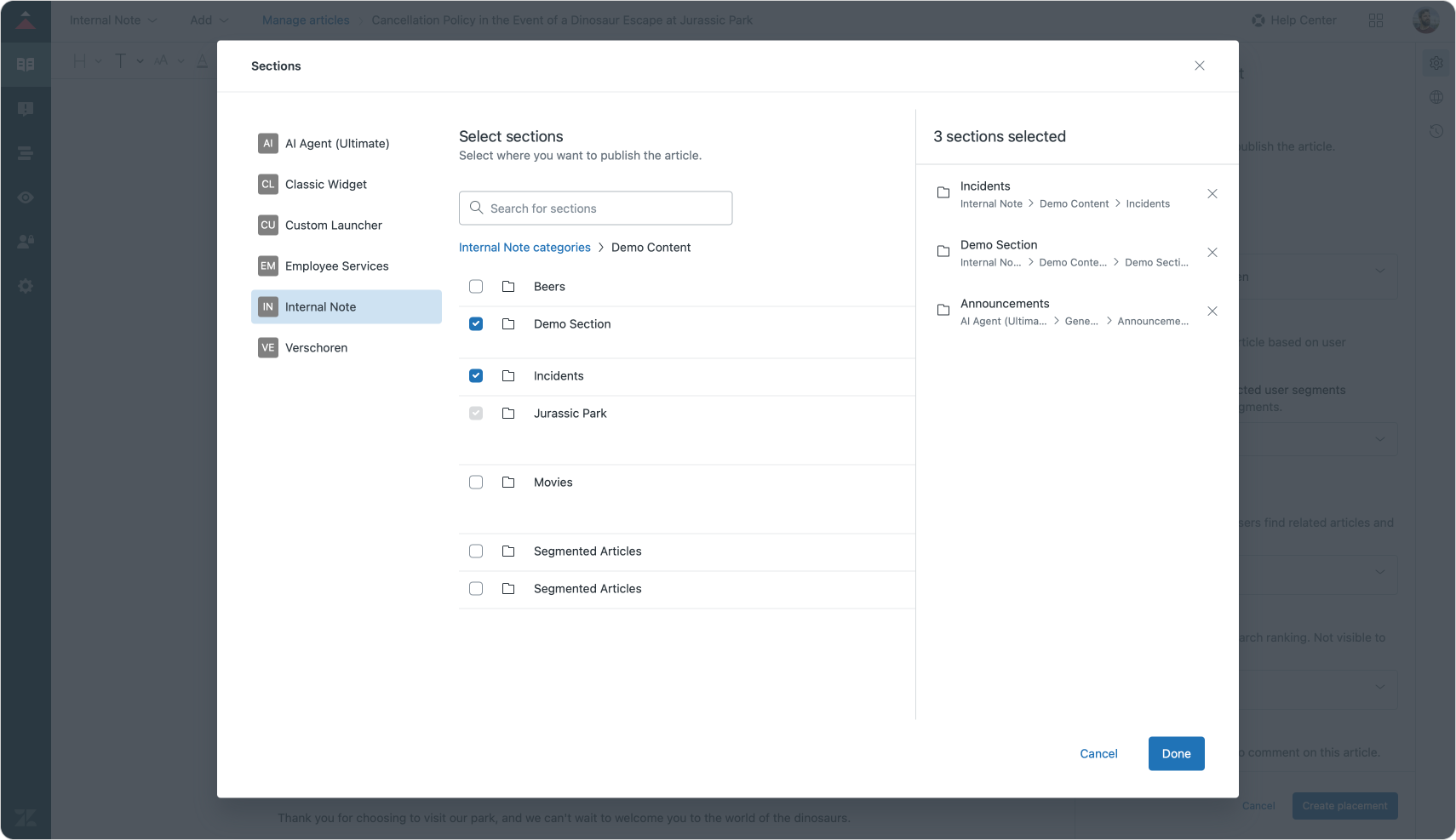
In the past, Help Center articles could only live in one section within a single category. That setup worked—until you had to support multiple products or brands.
Say you have update instructions that apply to both tablets and phones. Or you run a hotel chain and want to explain how to use the in-room TV at each location, while still keeping location-specific content like directions unique. Traditionally, you’d either have to duplicate the article across sections or group everything into a shared section—both of which made navigation messy and maintenance harder.
Multi-placement
Article Multi-placement lets you create one article and place it in up to 10 different sections across all brands in your help center.
Article placements share the same title and body but have a unique article ID and placement configuration that tells your help center where the article should appear. Updates to the article’s content are automatically reflected across all placements, so you only need to create and maintain content once.
AI Insights Hub improvements
Zendesk's AI Insights Hub in Admin Center gives you actionable insights in how to improve the way Agent Copilot helps your agents. It offers features you should enable and lists suggestions on how to improve your Zendesk setup.
The recommendations now not only suggest triggers, but it will also create the trigger for you. These triggers can update priority, react to intent and sentiment or modify routing and assignment.
Platform & Security
Help Center authentication for the Web Widget

When help center authentication is turned on for the Web Widget, interactions with the Web Widget by end users who are signed into the help center automatically adopt the user's signed-in identity. The user's name and email address can be shared with the bots and agents engaging with them.
One small checkbox that makes Messaging authentication accessible to everyone without custom development.
I've got a full article on the topic ready for later this month, so subscribe of you want to dive into this topic with a lot more detail!
New Webhook Actions

Zendesk can send out alerts when certain updates happen to users, organizations, custom objects or tickets. These alerts can be send to external systems like Slack in order to notify you of things happening in your Zendesk instance.
You can for example notify your team when a new article is published. New these month are alerts when CSAT is send or received, an SLA is breached or a ticket get (un)deleted.
Attachment Deletion Schedules
Zendesk's deletion schedules are the perfect way to stay compliant with privacy laws, while keeping your data usage in check.
They allow you to delete tickets, conversations or users that match a specific set of conditions on an automated basis.

New this month is the ability to target tickets with attachments. This way you can delete storage heavy tickets from your instance and make sure you stay under your allowed limit.
I'd love to see a bit more granularity though. Remove attachments only, or remove tickets with attachments over a certain size.
Major Changes
Removal of Article Recommendations
Starting September 8, 2025, the article recommendations feature in AI agents for messaging will be deprecated and replaced with a more powerful, generative AI-powered experience. Instead of simply recommending articles, your AI agent will automatically begin delivering accurate, human-like answers directly in the conversation, eliminating the need for customers to sift through information to find the answer they need.
In other words, all customers get the new AI Agents Essential behavior, replacing the list of articles with custom generated responses tailored to the customers' question.
Removal of Legacy Custom Objects
Phase 1: Removing option to create new legacy custom objects and relationships
Beginning January 15, 2026, creating new custom objects or relationships using the legacy version will no longer be allowed. However, you can still create new records for existing legacy objects during this period.
Phase 2: Removing legacy custom objects, relationships, and records
Starting July 27, 2026, Zendesk will fully remove legacy custom objects. This means the legacy APIs, admin interface, and all legacy custom object records will no longer be supported or accessible. Customers are encouraged to transition to the new custom objects—released in 2023—which offers a richer, faster, and fully native experience including:

Update to automated resolution counting
Up until now, conversations where the AI agent triggered a macro were counted as Processed conversations. Now, we check whether a new public comment was added, and update the conversation with it, displaying it in the conversation logs. As these public comments are triggered by the AI agent, they are now displayed as AI agent messages, and the conversation status is updated to Answered.
This means that automated resolutions are now consumed when an advanced email AI agent triggers a macro that adds a public comment.
I assume this closes some loophole where customers used a combination of tags to trigger macros instead of adding the comment directly in the AI Agent flow, thus bypassing the automated resolution counting.
Perspectives
CXOTalk - Tom Eggemeier
In this interview on CXOTalk, Zendesk CEO Tom Eggemeier shares a strategic perspective on how AI is transforming customer support. He outlines the company’s pivot to becoming an AI-first platform, driven by the belief that 80% of customer interactions will be AI-handled within five years.
And so it's getting flipped on its head right now, customer support from reactive to more proactive, from reactive to more root cause analysis, and from reactive to actually actions of solving root cause problems that a company is having, interacting with its employees or customers.
Six Five Summit - Shashi Upadhyay
At the Six Five Summit, Zendesk’s Shashi Upadhyay discussed how AI is fundamentally transforming both customer and employee service. The conversation highlighted how this shift improves customer satisfaction, reduces agent burnout and turnover, and marks a shift toward a future where fast, reliable AI resolution is the norm—and humans step in only when it truly matters.
We’re entering the golden era of service—where a problem is solved instantly by AI, or a live agent is always available when it truly matters
Adrian McDermott at RAISE
Zendesk CTO Adrian McDermott’s RAISE keynote highlighted how AI is fundamentally transforming customer service—not just by adding new channels, but by changing the very way service is delivered. He argues that automation tends to expand human roles rather than eliminate them.
Technology enables work, it doesn’t destroy it.
Scale
Quote from a recent Craig Mod newsletter he talked about how scale hinders real human interactions. He wrote about tourism, but the same can easily be said for customer care.
At risk of oversimplifying: Most “problems” in the world today boil down to scale and abstraction. As scale increases, individuals become more abstract, and humanity and empathy are lost. - Craig Mod
Consumer Trends
The 2025 Consumer Trends Mid-Year report shows that AI is no longer a novelty but an expectation, with 98% of Americans aware of it and younger generations adopting it at twice the rate of older ones. Gen Z, in particular, is increasingly comfortable interacting with AI for support, shopping, and even companionship, signaling a shift in customer expectations.
For Zendesk teams, this growing trust — especially among users under 40 who already pay for tools like ChatGPT — highlights the need to design AI experiences that go beyond efficiency and deflection, and instead feel like intelligent, helpful assistants.
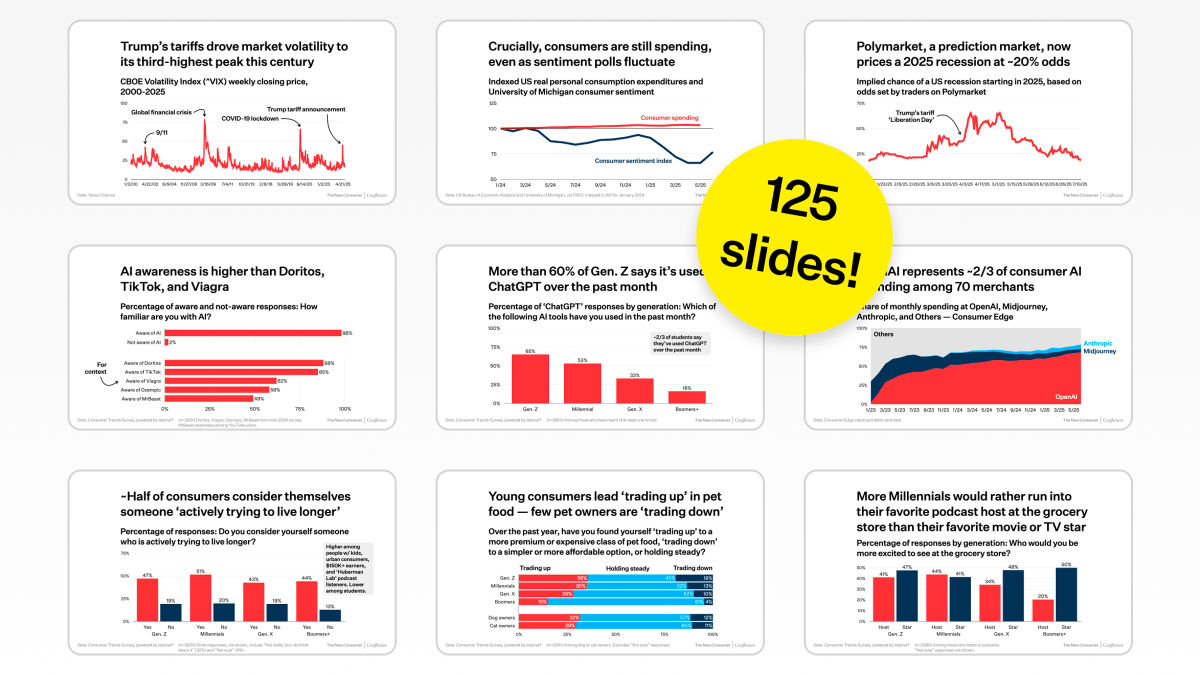
And finally...
